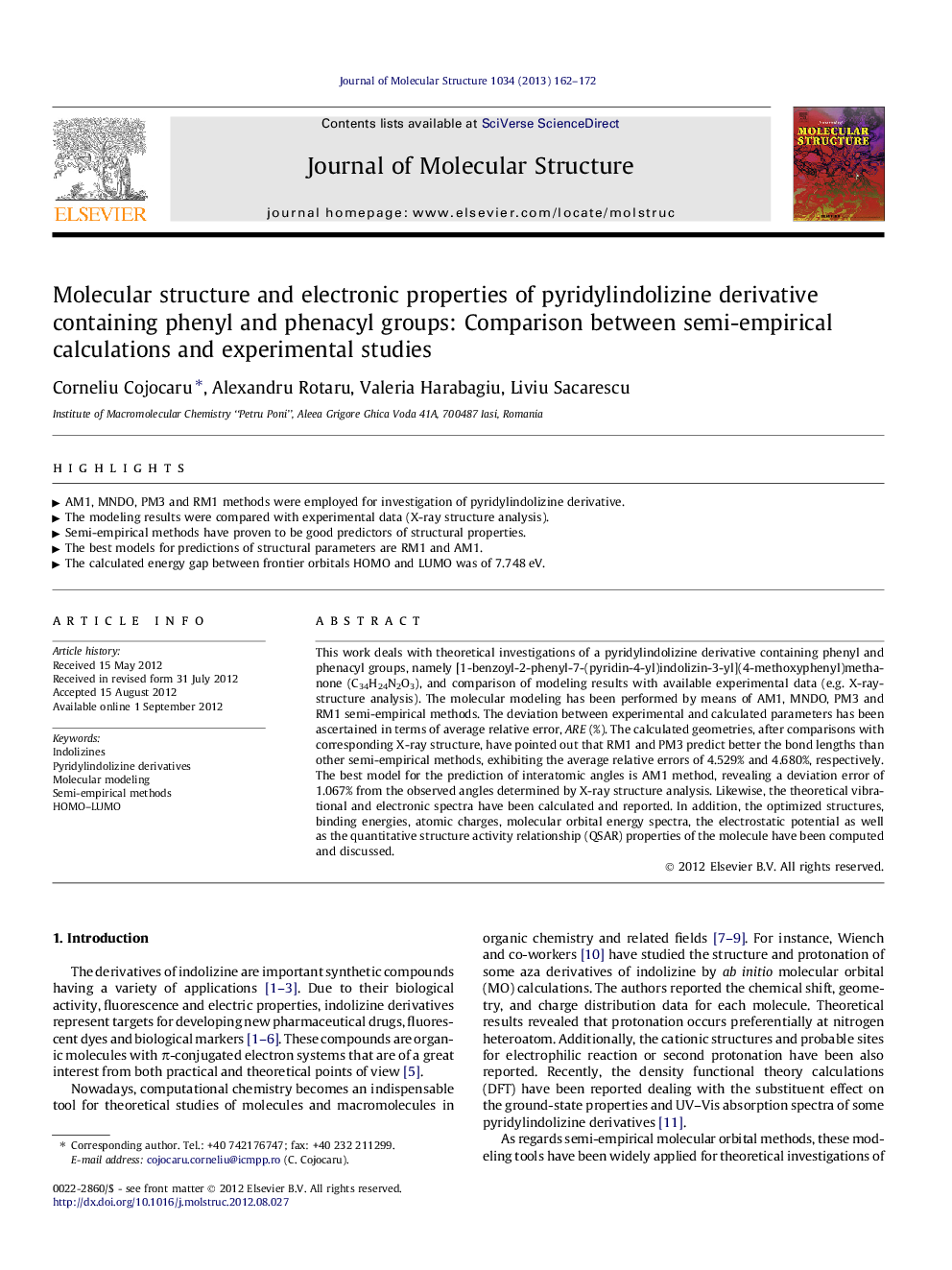| Article ID | Journal | Published Year | Pages | File Type |
|---|---|---|---|---|
| 1403268 | Journal of Molecular Structure | 2013 | 11 Pages |
This work deals with theoretical investigations of a pyridylindolizine derivative containing phenyl and phenacyl groups, namely [1-benzoyl-2-phenyl-7-(pyridin-4-yl)indolizin-3-yl](4-methoxyphenyl)methanone (C34H24N2O3), and comparison of modeling results with available experimental data (e.g. X-ray-structure analysis). The molecular modeling has been performed by means of AM1, MNDO, PM3 and RM1 semi-empirical methods. The deviation between experimental and calculated parameters has been ascertained in terms of average relative error, ARE (%). The calculated geometries, after comparisons with corresponding X-ray structure, have pointed out that RM1 and PM3 predict better the bond lengths than other semi-empirical methods, exhibiting the average relative errors of 4.529% and 4.680%, respectively. The best model for the prediction of interatomic angles is AM1 method, revealing a deviation error of 1.067% from the observed angles determined by X-ray structure analysis. Likewise, the theoretical vibrational and electronic spectra have been calculated and reported. In addition, the optimized structures, binding energies, atomic charges, molecular orbital energy spectra, the electrostatic potential as well as the quantitative structure activity relationship (QSAR) properties of the molecule have been computed and discussed.
► AM1, MNDO, PM3 and RM1 methods were employed for investigation of pyridylindolizine derivative. ► The modeling results were compared with experimental data (X-ray structure analysis). ► Semi-empirical methods have proven to be good predictors of structural properties. ► The best models for predictions of structural parameters are RM1 and AM1. ► The calculated energy gap between frontier orbitals HOMO and LUMO was of 7.748 eV.
